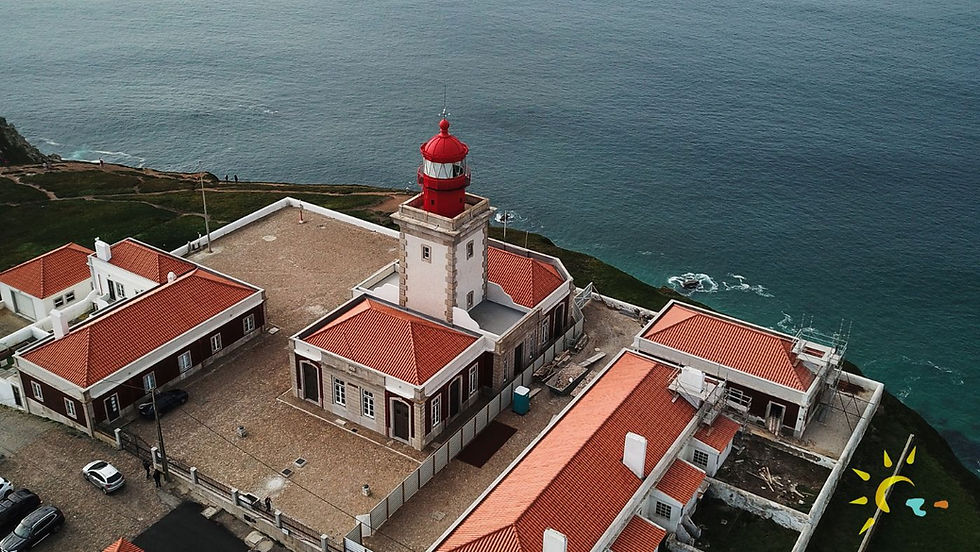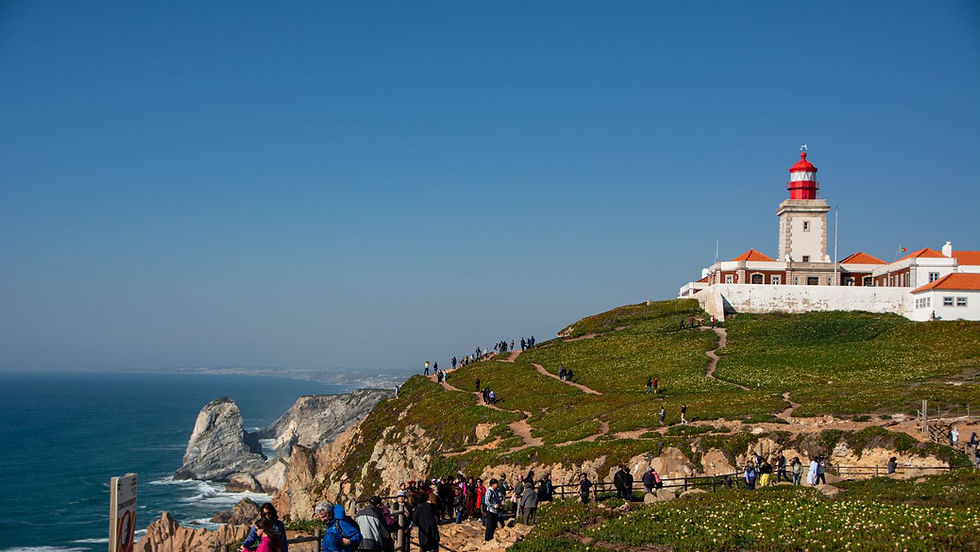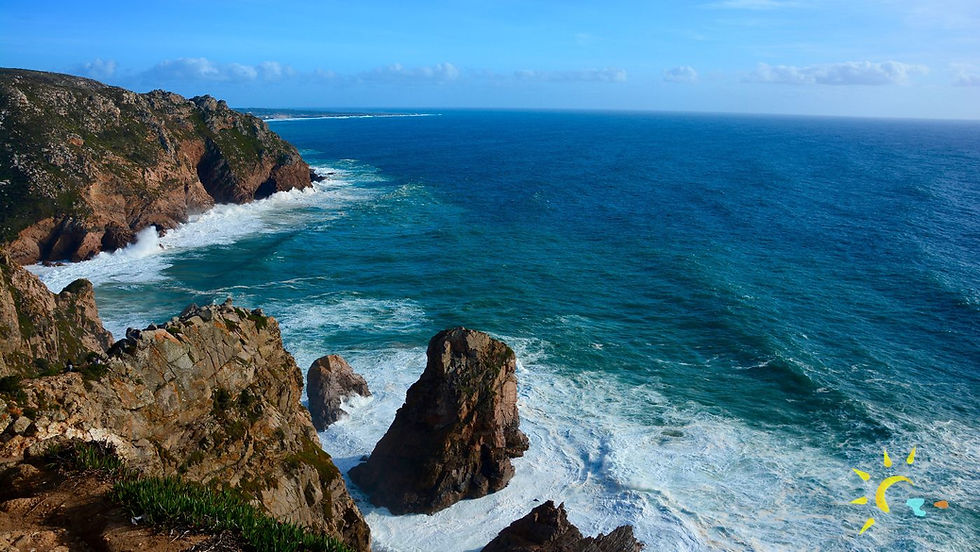Cabo da Roca Travel Guide: A Journey to Portugal's Westernmost Point (2025)
- Shahina Sultana
- Mar 5
- 5 min read
Cabo da Roca, often called the "End of the World," is one of Portugal's most famous and stunning spots. Perched high on the majestic cliffs that line the Atlantic coast, Cabo da Roca is the westernmost point of mainland Europe, where views of land and sea are so breathtaking that they have mesmerized travelers throughout history. This travel guide takes you through the historical significance, attractions, and activities in Cabo da Roca so that you can enjoy the natural wonder to the fullest.
Overview of Cabo da Roca

Cabo da Roca of western Lisbon is basically less than 45 minutes away. It is a towering cliff where visitors catch the ocean's breathtaking panoramic views across the huge sparkling ocean and jagged coastline, and where nature is in full bloom with a rare untouched wilderness and history to enhance the experience. In earlier times, until the 14th century, this was considered the edge of the world because of its shoreline's sudden fall into the ocean without repeating land. The myth of the impossibility of reaching the "end of the world" still exists today, where visitors can behold and breathe in relief at the fearsome beauty and isolation of this dramatic spot.
Getting to Cabo da Roca
Accessibility favors Cabo da Roca, which is connected to key cities such as Lisbon, Cascais, and Sintra. Here are several ways to reach this fabulous spot and the unique experience associated with each one:
By Car
Option 1: Drive to Cabo Roca (Most Convenient) You only need to take the N247 road leading straight to the cape. It’s just a 45-minute drive from Lisbon, or 20 minutes from Sintra. Driving gives you the ability to explore on your own and at your own pace, if you want to avoid the hassle of dealing with a single visit.
By Public Transport
Although it’s simplest to drive there, it’s possible to get to Cabo Roca on public transport, too. Bus services run from Sintra and Cascais, including the 1624 and 1253 routes, which stop at the cape. Visitors staying in the historic town often take the 1253 bus from Sintra. Otherwise, taking a taxi or Uber/Bolt is undoubtedly a comfortable option to see the place but due to its remote place is also challenging to return, particularly in the peak tourist season.
What You Can Expect at Cabo da Roca
The area is not overdeveloped, which helps keep its natural beauty alive. Here are the basics of essential attractions and sights that render it an unforgettable destination:
Cabo da Roca Lighthouse

Its lighthouse is one of the region's most famous structures. Finished in 1772, it was Portugal’s first lighthouse built for a specific purpose. At 150 meters above sea level, its light can be detected from almost 46 kilometers to guide ships through the hazardous waters of the Atlantic Ocean. The lighthouse itself is gorgeous, though tours are not available. The surrounding area also allows visitors to capture photos and admire the view.
Monument to the Discoveries
The Ponta Mais Ocidental do Continente Europeu is the most notable edifice at Cabo Roca. It marks the significance of this cape in Portuguese maritime history. It is one of the many departure ports earmarked for important explorers during the Age of Discovery and eternally cherished by the Portuguese. It is just one of the most photographed spots, an otherwise simple monument in stone.
Scenic Views and Sunset Magic
Cabo da Roca is top of the list in most picture postcards, stunning vista over the expansive Atlantic Ocean. Whether you are standing there by that lighthouse or walking down the cliffs, the serenity of the unbeatable ocean and sky is sheer magical beauty. Its sunset time again, all those golden fiery hues spreading across the horizon.
Just one of those magic places to observe this natural phenomenon. Dressing warm is very important because, without that, you would face strong, chilly winds in some seasons, even in summer. Cabo Roca often feels much, much colder than its sister towns, with ten degrees less at times than even nearby Sintra or Cascais.

There are also hiking trails at Cabo da Roca for those who wish to be alone with the wild, rugged beauty of this coastline. It winds through the cliffs to a few desirable beaches, including Praia da Ursa, about a kilometer away, and Praia da Adraga, nearly two kilometers away. This trail descends to Praia da Ursa, traversing rolling hills with stunning coastline vistas.
If you want to go further toward adventure, the routes go south to Praia do Louriçal and Praia de Assentiz. The unusual sea pillars of Praia da Ursa make a very splendid hike, often likened to one of the region's hidden treasures.
The Tranquil and Remote Atmosphere
Cabo Roca comes among the places one would love for its sense of being distant. It is not as developed as most places, though it seems designed for short visits, mainly because of these icy winds and limited amenities. But, for those who take an adventure along the northern cliffs or the less-populated paths, the area is wonderfully silent. Less development means there isn't much else besides the lighthouse, gift shops, and one little coffee shop by the monument. That further emphasizes seclusion, thereby increasing the cape's natural beauty.
Best Visit Time

Cabo da Roca is a vacation place for every season, but the best time to visit depends on the reason for your trip. • Spring and Fall- April to June and September to October- are for everyone who hates crowds but still likes a hot temperature with clear skies. • For those who prefer dramatic landscapes and fewer tourists, this is the time around winter, ideal for photographers or other solitary souls looking for that silence.
Best Places to Go and Tips
1. No Crowds: Coach tours tend to stop here for a few minutes but are often discouraged from lingering by the winds. Get there early or take one of the hiking routes for a tranquil visit.
2. Take your time: It's a popular place for tourists in a hurry. Still, you should feel free to spend some time just looking at the view. The stillness of this place is ideal for reflection or photography.
3. Getting There: It's easiest to drive there; buses (1624 and 1253) run from Sintra and Cascais to Cabo da Roca. The price is quite reasonable, and the trip gives you time to unwind and enjoy the view.
Why Should You Visit Cabo da Roca?
Cabo de Roca is not just a geographical point; it is something more: a natural beauty, wealth in history, and culture. Blustery cliffs, a lighthouse towering above pounding waves, harsh shores, and trails and coast for solo nature lovers provide a wilderness. It will be remarkable, although one might be tempted to simply go for the history, the view, or just to record a moment of uninterrupted solitude. Be prepared to be amazed by the wild beauty of Portugal's farthest western point by bringing a windbreaker, your desire for adventure, and your camera to give you somewhat of a fighting chance.
